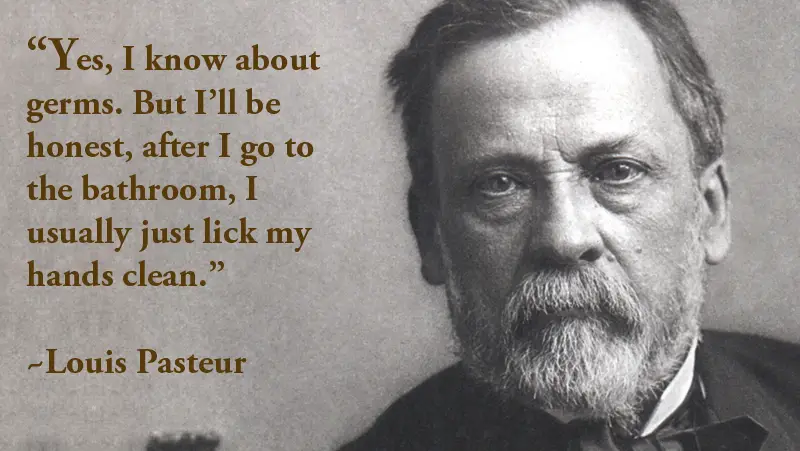
The early life of Louis Pasteur
Louis Pasteur was born on 27 December 1822 in Dole, France. He was the third child and the only son in the poor catholic family of five. Born to tanner Jean-Joseph Pasteur and his wife Jeanne-Etiennette Roqui, Louis was an incredibly hardworking student but was never considered exceptional.
One of his professors even called him ‘mediocre’. At the age of nine, he attended primary school in Arbois where he got his hands-on drawing and painting. Portraits of his friends and family are still preserved and showcased at the Pasteur Institute in Paris.

After completing his secondary education from Besancon, he was accepted at College Royal in Besancon where he graduated in both BA and BSc with honours in physics, mathematics, drawing, and Latin in 1842.
In 1854 and 1847, he completed his MSc and Ph.D. respectively in physics and chemistry from prestigious Ecole Normale Supérieure. For a few years, he served as a professor of physics at the Lycée in Dijon and as a professor of chemistry at the University of Strasbourg.
Marriage and facts about kids
Pasteur met Marie Laurent at the University of Strasbourg. She was the daughter of the university’s rector and was appointed as Louis’ secretary and his writing assistant. Later on 29 May 1849, they got married.
Together they had five children named Jeanne (1850–1859), Jean Baptiste (1851–1908), Cécile (1853–1866), Marie Louise (1858–1934), and Camille (1863–1865). Unfortunately, only two of their children survived until adulthood as the other three died of typhoid fever.
The death of his children was his deepest drive to help other people from such diseases.

Louis Pasteur discoveries, contributions, and experiments

Molecular asymmetry
At Strasbourg University he spent most of his time studying chemistry and its researches. One of his important discoveries related to tartrate acid was the crystals containing a mirror image of left and right-handed isomers.

Pasteurization
His experiments with winegrowers of France, he developed the way to pasteurize and kill germs in liquids like milk, wine, and even beer, as a part of the fermentation process.

Silkworm experiments and Vaccine Developments
He invented the cure for diseases that affected silkworms, which proved to be a boon to textile industries, Chicken Cholera, Rabies, and Anthrax in sheep.
His principles and research were used by future scientists such as Valley Radot, Frankland, Descours, Holmes, and Emile Duclaux in developing vaccines for diseases such as cholera, yellow fever, diphtheria, typhus and different strains of plague.
The Pasteur Institute
Once moving to Paris in 1857, Pasteur was employed in different universities as a professor. During this period he lost his three children. He even suffered from a long stroke, which partially paralyzed him for the rest of his life.
The Pasteur Institute was founded in 1888 to study the vaccine for rabies and research about other dangerous and contagious diseases. The Institute is known for its inventions and research in the field of microbiology, and other fields and discovered the discipline of microbiology in 1889.
To help researchers to learn and explore the most of science he established several Pasteur institutes around the world and through-out Europe especially. Since 1891, he started to establish various research institutes and hospitals for people and now there are 32 Pasteur institutes or hospitals in 29 countries around the world.
Louis Pasteur germ theory
To make people believe in the idea and effectiveness of his theory was not easy for him. There were times when his theories were considered controversial but now is considered correct.
He continuously worked to convince surgeons to believe that the germs are a cause of diseases and not ‘bad air’. He fought for his theory and During Louis Pasteur’s lifetime, it was not easy for him to convince others of his ideas, which were controversial in their time but are considered correct today.
Pasteur fought to convince surgeons that germs existed and they spread through human contact and even medical instruments. He thence states that killing these germs through sterilization and pasteurization is important and imperative.
In addition to germ theory, he also researched in virology. His intense research in for rabies, he realized that some weak kind of disease can be used as “immunization” against stronger forms of the disease.

The demise of Louis Pasteur
Louis Pasteur worked at one of the Pasteur institutes until June 1895 and then retired due to his increasingly bad health. Unfortunately due to multiple strokes, he died on 28 September 1895.
Louis died at an age of 73, remarking what later became his most famous quote
“I should like to be younger, to devote myself to a new ardour to the study of new diseases.”
He was a man with faith in good and honest human being. He worked endlessly for the benefit of people and to help them enjoy the real benefits i.e. the treatment of infectious diseases.
Louis Pasteur was one of the bravest and kindest souls one has encountered and he not only worked for benefits of known, but also the entire community and the world.
More than any scientist, he helped in increasing the life expectancy of people in the nineteenth and twentieth century. His researches and are still read and referred extensively.